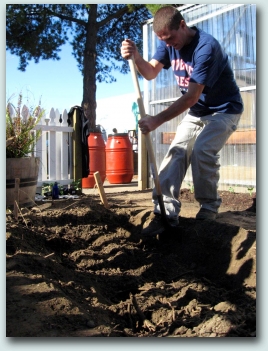You’ve probably heard about practical things we can do to help the environment, but have you thought about how our state of mind can affect the earth? One of the most important ways to help the planet is to teach the next generation to appreciate it.
While teaching our children about practical methods, like recycling, is important. Teaching our children to have a humble state of mind can have a deeper and more lasting effect. If we plant the seed of environmental humility in our children, perhaps they will recognize the quiet importance of nature and grow up to develop innovative ways to help preserve the planet.
What are some ways to elicit a humble attitude and a love of nature in our children? How does self-reflection and humility lead to a greater respect for the environment? And what can our children learn from nature that will help them develop a love for it?
1. Treat children with respect.
Most of us know that children will do what we, as their parents, do more than what we say. Our children are going to treat others the way they are treated themselves. If we treat our children respectfully, they will develop a respectful and compassionate attitude, which is one of the building blocks of environmental awareness. Then they will be more likely to treat the planet and other things in their lives with respect, and not exploit the earth’s resources.
2. Strive for a “natural” lifestyle.
Children who are not connected to nature will have a hard time loving and appreciating it. Being exposed to breastfeeding, babywearing, natural childbirth, and other natural parenting approaches are all ways that our children are first connected to the natural alternatives that have been used for many years – before the new styles of parenting came onto the scene. 
Choose naturally grown, organic foods as well. Children love to get their hands in the dirt, take advantage of that desire and get teach them how to plant and harvest their own garden. A trip to the library will help you find many excellent books on the recognition and harvesting of wild foods, if you desire to go foraging at a State Park. Children will see nature as a provider if they get involved in this way. Just be sure you know teach your children what it is that you are looking for and picking!
Alternatively, you could visit a neighbor’s farm or garden in order to teach them where the more of our food supply food comes from. Once again, our kids will see that the earth is a provider of sustenance. We need to point out to our children that without good soil, air, and water, there would be no food.
3. Get away from TV and computer screens and out into nature.
Experiencing nature through a screen is more likely to elicit a love of technology than a love of nature (not that a love of technology is necessarily bad; but it’s a good idea to balance it with an appreciation of the natural world). Take a walk under the starry sky with your family and show them the beauty and enormity of the night sky. Show them large, sweeping spaces, high mountains, deep woods and ancient, massive trees. They will begin to see their own smallness, and the seeds of humility will hopefully be sown.
Go hiking or camping, and encourage your children to write, draw and discuss the experience and how it made them feel. This will encourage self-reflection and a personal identification with nature.
The future of the planet begins with teaching our children to love the earth and all that is in it. What are you doing to teach your kids this Earth Day about protecting our environment?
Earth Day Resources:
http://www.earthday.net/earthday2010
http://www.earthday.org/earthday2010
http://holidays.kaboose.com/earth-day/
